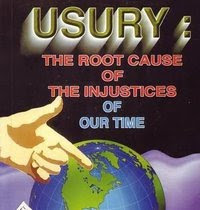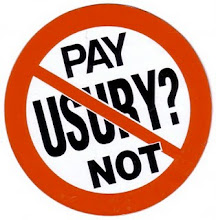Innovative & Timely Ideas for Municipal Politicians

Innovative & Timely Ideas for Municipal Politicians
(And for the voters who will elect them in Ontario on October 25, 2010)
By Tom J. Kennedy
Irving Fisher authored a book titled “Stamp Scrip” in 1933 wherein he described examples of successful scrip experiments that were implemented during the Depression. For simplicity sake, and for clarity of this article let us assume that scrip is another word for a usuryfree community currency. While local scrip was a tried and proven model that worked in the 20th Century, the perfected model of a usuryfree community currency is working in various local communities all around the world in this 21st Century given the ease of modern technology. In his book, Irving Fisher describes two noteworthy communities in Europe that had successfully introduced scrip in the 1930's - the Bavarian town of Schwanenkirchen and the Austrian town of Woergl.
We can correctly assume that the astute businessmen who lived in these towns during the 1930's were familiar with Silvio Gesell’s popular book of that era titled “The Natural Economic Order.” Silvio Gesell had published this book in the German language in 1913. In his book, Silvio gesell outlined his views on the true nature of money and how it was malfunctioning in the economy of the early 20th Century. In reality, Silvio Gesell was a pioneer in the monetary reform movement that continues to grow and expand as more and more people learn the truth about “money creation” within our orthodox, economic system of usury-based, debt money. An English edition of “The natural Economic Order” was not available until 1934.
Silvio Gesell was a renowned, German businessman who advocated monetary reform, during the 1920's and 1930's, but like today, few of his peers attempted to implement any of the innovative ideas that he advocated - that is until the Depression of the 1930's. Only when the economic pain became severe when the conventional money of the day became in short supply did his friends and business associates consider implementing Silvio Gesell’s innovative and timely concepts about money.
In the early 1930's, Hans Timm, one of his business associates took up the challenge to make a gallant effort to implement Silvio Gesell’s idea of issuing scrip. For a while, it seemed that Silvio Gesell and Hans Timm were the sole proponents of local scrip as they offered their unique recommendations to be implemented. It was their intention that local scrip be issued to create the optimal, beneficial effect on the faltering economic system of orthodox money that was relying on usury-based, paper notes of debt money. Indeed, we are facing similar economic circumstances now in this 21st Century, so perhaps we could re-educate ourselves by examining how local scrip created “economic miracles” in the early 1930's.
Hans Timm formed an association and and called it the “Wara Exchange Association.” Hans Timm issued and printed paper notes which he referred to as ‘stamp scrip.’ He coined the word ‘wara’ by combining two German words - ‘ware’ the word for ‘goods’ and ‘wahrung’ the word for currency.
On pages 58 and 59 of the book titled “New Money for Healthy Communities,” authored and self-published by Tom Greco Jr. in 1994, there is a very good summary about these two successful applications of local scrip in the 1930's.
(NOTE: I highly recommend Tom Greco’s book for anyone pursuing a self-imposed course of study on our orthodox, economic system of usury-based, debt money.)
In Chapter 8, titled “A Brief History of Local Currencies” under sub-title “Depression Era Stamp Scrip in Germany and Austria,” pages 58 & 59) Tom Greco writes:
“The village of Schwanenkirchen had a population of about 500 and its only industry was a coal mine which had been closed for two years because of the Depression. The village had barely existed by means of the government dole and almost everyone was in debt. Deflation throughout Germany led to bankruptcies, suicides and overcrowded jails. The coal mine owner had heard about Wara stamp scrip and decided to try it. He got a loan of official currency (Reichsmarks) and with it bought Wara stamp scrip from the Wara Exchange Association.”
According to a report in The New Republic dated August 10, 1932, the following report about the village of Schwanenkirchen is written:
“Herr Hebecker assembled his workers. He told them that he had succeeded in getting a loan of 40,000 Reichsmarks, that he had wished to resume operations but that he wanted to pay wages not in Marks but in Wara. The miners agreed to the proposal when they learned that the village stores would accept Wara in exchange for goods.
When after two years of complete stagnation the workers for the first time brought home their pay envelopes, no one was interested in hoarding a cent of it; all of the money went to the stores to pay off debts or for the purchase of necessities. The shopkeepers, too were happy although at first they had felt a little hesitant about Wara, they had no choice, as no one had any other kind of money. The shopkeepers then forced it on the wholesalers, the wholesalers forced it on the manufacturers, who in turn tried to pass it on to those who carried their notes, or they exchanged it at Herr Hebecker’s mine for coal.
No one who received Wara wished to hold it; the workers, storekeepers, wholesalers and manufacturers all strove to get rid of it as quickly as possible, for any person who held it was obliged to pay the 2 cent stamp tax. So Wara kept circulating, a large part of it returning to the coal mine, where it provided work, profits and better conditions for the entire community. Indeed, one could not have recognized Schwanenkirchen a few months after work had resumed at the mine. The village was on a prosperity basis, workers and merchants were free from debts and a new spirit of freedom and life pervaded the town.”
Irving Fisher in his book “Stamp Scrip” continues: “The news of the town’s prosperity in the midst of depression-ridden germany spread quickly. From all over the country reporters came to see and write about the “Miracle of Schwanenkirchen.” Even in the United states one read about it in the financial sections of most big papers. But no explanation was given as to the real cause of the miracle - that non-hoardable money was being tried out and that it was working marvelously.”
Tom Greco finishes describing this example of a successful scrip by writing: “Acceptance of Wara subsequently spread to various parts of Germany. About two thousand shops and one or two entire communities recovered by means of it. Finally, in November 1931, the German Government passed an emergency law ending the circulation of Wara. The ‘miracle’ of Schwanenkirchen then ended and the town went back on the dole.”
Tom Greco also writes (on pages 59 & 60) about a similar experiment where the Wara succeeded in the Austrian town of Woergl in 1932. It is interesting to note that the town of Woergl paid its employees with 50% Wara and 50% of the official government-sanctioned, paper notes of debt money. Likewise, the Austrian Government coerced the central bank to pass a similar emergency law to end the circulation of Wara in Woergl.
One can only speculate that the central bank (the purveyor of usury) coerced the German Government to end this successful experiment with scrip in the village of Schwanenkirchen and the town of Woergl. It is quite likely, that the common people who lived in the 1930's, had little or no knowledge about the design flaw of usury and how it was (and still is) the killer machine that keeps debtors in bondage to creditors for generation after generation.
The reality in this 21st Century is that more and more debtors are becoming re-educated about “money creation” and the Canadian (or otherwise) politicians of this 21st Century would think twice before they initiated any legislation to end any successful experiment with a usuryfree community currency that was providing mutual benefits to all who are participating.
The really good news is that in Canada, there is no current law which could prevent the launching of a local, usuryfree community currency or scrip. Any village, town or municipality could implement a usuryfree, community currency and agree to accept a portion of this local scrip as partial payment of property taxes. The application of this innovative and timely idea would provide positive results that I daresay would be every bit as successful as what occurred in Schwanenkirchen and Woergl in the 1930's.
Readers are invited to review ‘The Innovative Proposal.” Do a search at any search engine or find the article at the blog - The UsuryFree Eye Opener at this url:
http://usuryfree.blogspot.com/2010/04/innovative-proposal.html
Below is an email from Peter Koenig on June 1, 2010 wherein he shares an email (in the German language) that one of the provinces in Austria is now accepting a usuryfree community currency as payment of taxes. Anyone finding more information about this newsworthy item is invited to share it and I will post it at the UsuryFree Eye Opener.
___________________________________________________________________
Date: Tue, 1 Jun 2010 11:22 PM
From: Peter Koenig pkconsulting@hotmail.com>
Below signals a milestone ... the first local authorities, in the province of Vorarlberg in Austria, to officially accept payment of taxes in a complementary currency.
Peter Koenig Enterprises
Seminal Thinking, Money Seminars, Organizational Architecture Zürich, Switzerland
http://peterkoenig.typepad.com
_______________________________________________________________
Date: Tue, 1 Jun 2010 09:38 AM
Subject: Steuern mit Talenten zahlen
From Heidi heidi@sunflower.ch>
Lieber Peter
Vorarlberg macht's möglich. Die Gemeinden dürfen in Zukunft einen durch sie festgelegten Anteil der Steuern in Talenten entgegen nehmen. Die Gemeinden müssen den Betrag in Euro verbuchen und können die Talente dann wiederum selber als Zahlungsmittel (für Vereinsförderung und Einkäufe) nutzen. Ein Meilenstein!
Mit lieben Grüssen
Heidi
http://www.sunflower.ch
_______________________________________________________________
Likewise, readers are invited to share both of these articles with any candidates who are seeking to be elected as municipal politicians in the province of Ontario, Canada on October 25, 2010.
The key question is: Which municipality in the province of Ontario (or elsewhere) will dare to take a leadership role in implementing a usuryfree community currency for the benefit of every citizen who resides in that particular municipality?
Additional resources are available upon request from The UsuryFree Network, P. O. Box 9333, Ottawa, Ontario K1G 3V1 Tel: 1.888.NOUSURY Email: usuryfree@gmail.com

